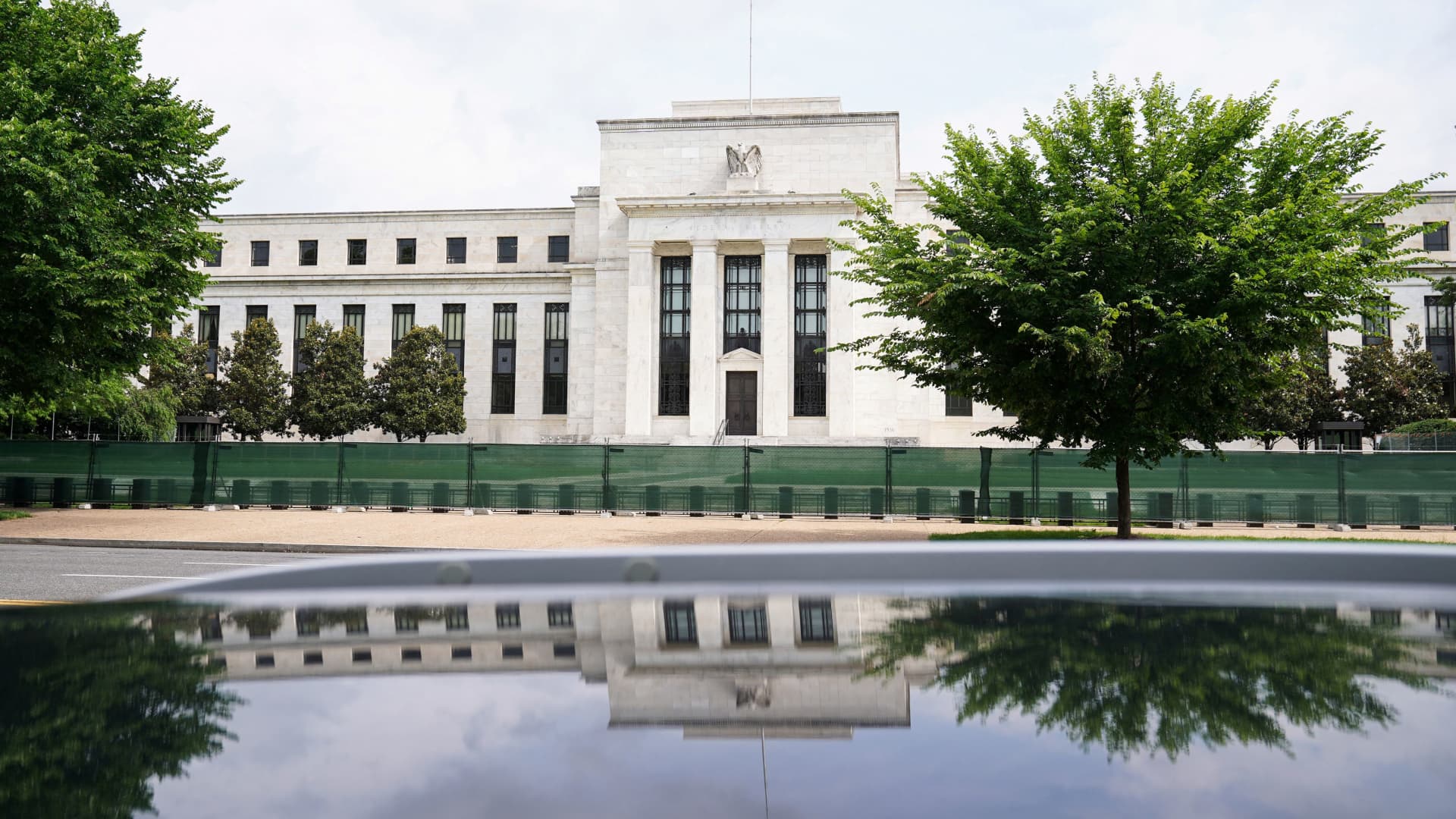
The Marriner S. Eccles Federal Reserve Board Building in Washington, D.C.
Sarah Silbiger | Reuters
“From peak to pivot” appears to be the mantra in global financial markets where concerns about inflation are fast giving way to concerns about impending recession.
It appears that inflation has peaked at least in the U.S.
Headline inflation and measures of the personal consumption expenditures price index in Thursday’s third-quarter gross domestic product report and in Friday’s income and spending data have decelerated markedly since June.
It’s likely that going forward the so-called core measures of inflation will decline as well, as home prices and rents have turned decidedly lower and wage inflation is decelerating.
Those inputs, however, tend to move with a decided lag so they may not influence inflation readings for three to six months down the road.
Having said that, we are hearing more companies discuss a slowing economy, waning supply chain disruptions and the emerging ability to negotiate input costs lower, all positive signs that price pressures are waning.
Chatter on the Fed’s next steps heats up
Speculation is heating up around whether the Federal Reserve could guide markets toward a pivot to lower rates.
A pivot, which I’d welcome, may well be premature, however, from the Fed’s perspective.
A pause may be more likely, though we haven’t heard either expression used to describe the path of policy over the next several months.
Unless there is yet another issue that poses potential systemic risk, like the near implosion of the British pension system, the Fed is unlikely to pivot in the next few meetings, or even give nod to the notion.
A pivot would be an admission that the Fed has gone too far, too fast and would be stopping short of the so-called terminal rate for the short-term cost of money, which many believe to be between 4.5% to 5%.
We’ve had no indication that the Fed is comfortable that the terminal rate has been reached.
The ripple effect of a pivot
There are a host of reasons for the Fed to begin dialing back the size and frequency of rate hikes.
These include the following: dramatically tighter financial conditions, an enormous drop in money supply, a deep recession in residential real estate, clear signs of softening consumer demand, the risk of both domestic and global financial instability and declining liquidity.
However, the Fed has yet to fully admit that those factors will dictate policy moves in the short term.
In the long run, Fed policy is still being guided by the notion that to avoid a 1970s wage/price spiral, policy should get too tight before it gets too loose, a stance to which the central bank appears to be hewing closely.
Indeed, an admission that a pivot is the next policy move would send risk assets soaring and would immediately loosen credit conditions. This could potentially lead to a rebound in price pressures and damage the Fed’s inflation-fighting credentials – however strongly I might support such a move.
Striking the right balance at next week’s Fed meeting
The best outcome we all can hope for is that the Fed will move forward with its 0.75 percentage point hike next week, dial down expectations with respect to the size of future rate increases and make a forceful statement that inflation is beginning to bend to the central bank’s will and that now may be time to reflect on the impact of the rapid tightening that has already taken place.
That alone would be music to the market’s ears and would also salt the winter runway to allow for a hoped-for soft landing.
In the weeks and months ahead, be wary of speculative reports suggesting a pivot is at hand.
To that end, certain lawmakers should cease calling on the Fed to stop raising rates.
If the central bank decides to terminate this tightening cycle, assuming its goals and objectives are achieved, such pressure from elected officials could be interpreted as having forced the Fed’s hand, dealing a severe blow to its fragile credibility.
What is most needed now is credibility, consistency, and clarity from the world’s leading central bank.
Anything else will cloud the market’s vision and, in this instance, accentuate the risks formerly associated with a 1970s Fed precisely at a moment when the central bank has taken that comparison off the table.
— Ron Insana is a CNBC contributor and a senior advisor at Schroders.
